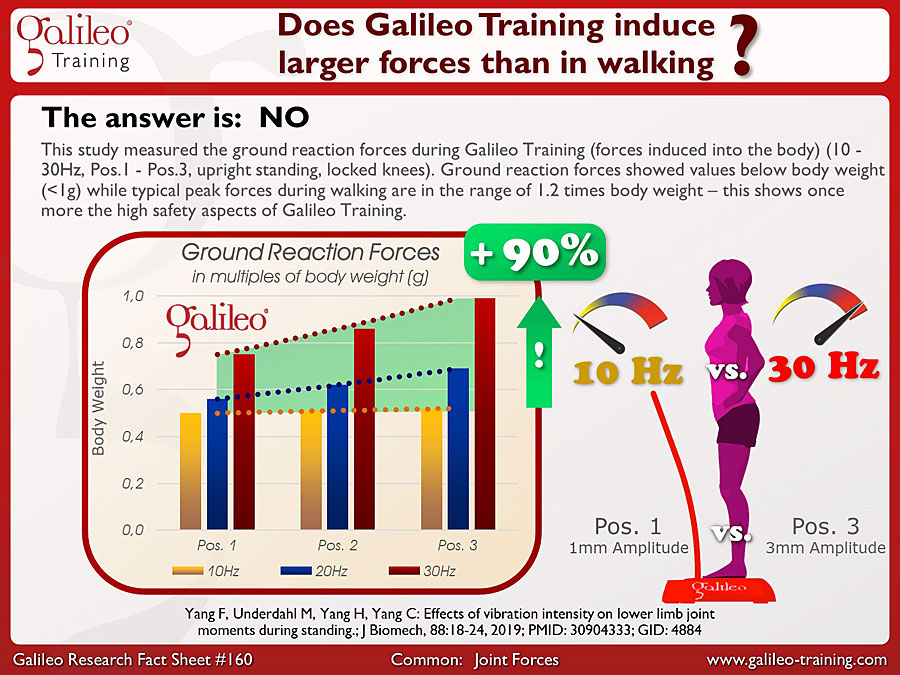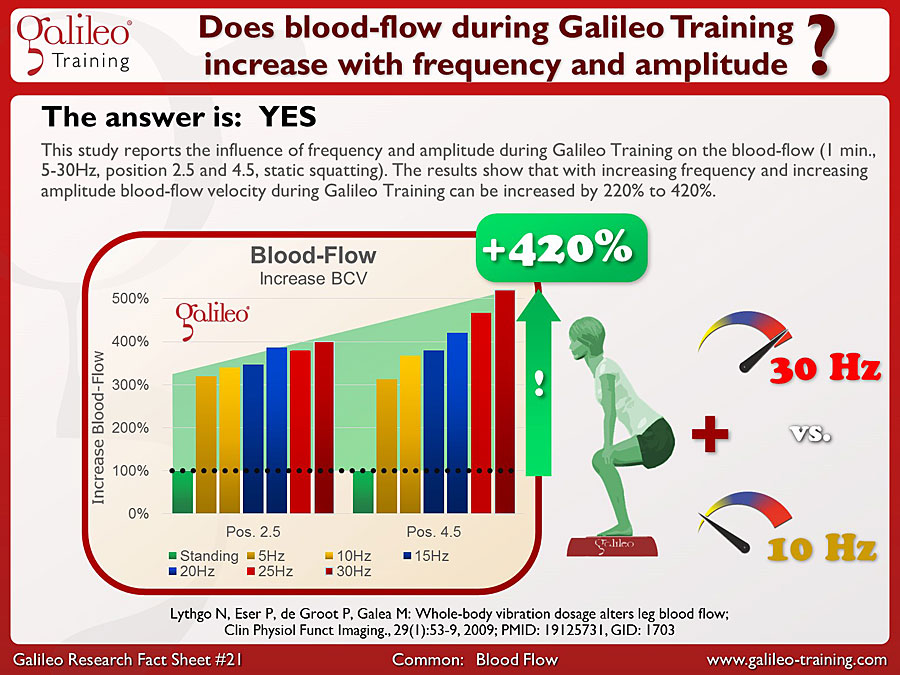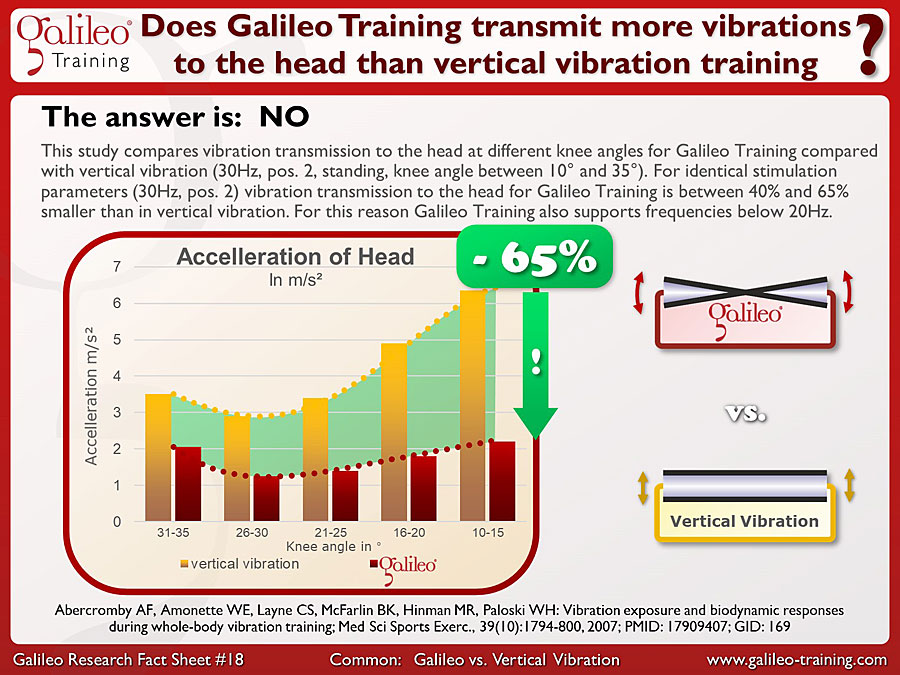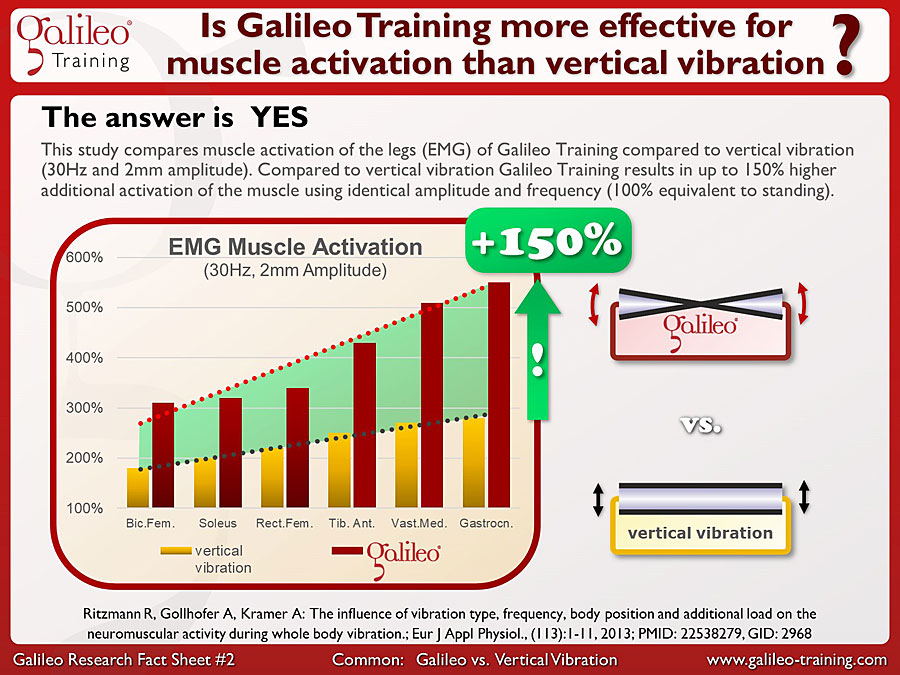Common
Galileo Research Facts No. 167: Are Joint Torques during Galileo Training Dependent on Frequency and Amplitude?
This study investigates the effects of Frequency and Amplitude during Galileo Training on joint torques (10, 20, 30Hz, pos.1, pos.2, pos.3, upright standing with straight legs). Joint torque showed an significant increase with increasing frequency and amplitude of up to 250% - nevertheless joint torques stayed below those of natural walking...
Galileo Research Facts No. 160: Does Galileo Training induce larger forces than in walking?
This study measured the ground reaction forces during Galileo Training (forces induced into the body) (10 - 30Hz, Pos.1 - Pos.3, upright standing, locked knees). Ground reaction forces showed values below body weight (<1g) while typical peak forces during walking are in the range of 1.2 times body weight – this shows once more the high safety aspects of Galileo Training...
Galileo Research Facts No. 21: Does blood-flow during Galileo Training increase with frequency and Amplitude?
This study reports the influence of frequency and amplitude during Galileo Training on the blood-flow (1 min., 5-30Hz, position 2.5 and 4.5, static squatting). The results show that with increasing frequency and increasing amplitude blood-flow velocity during Galileo Training can be increased by 220% to 420%.
Galileo Research Facts No. 18: Does Galileo Training transmit more vibrations to the head than vertical vibration training?
This study compares vibration transmission to the head at different knee angles for Galileo Training compared with vertical vibration (30Hz, pos. 2, standing, knee angle between 10° and 35°). For identical stimulation parameters (30Hz, pos. 2) vibration transmission to the head for Galileo Training is between 40% and 65% smaller than in vertical vibration. For this reason Galileo Training also supports frequencies below 20Hz...
Galileo Research Facts No. 2: Is Galileo Training more effective for muscle activation than vertical vibration?
This study compares muscle activation of the legs (EMG) of Galileo Training compared to vertical vibration (30Hz and 2mm amplitude). Compared to vertical vibration Galileo Training results in up to 150% higher additional activation of the muscle using identical amplitude and frequency (100% equivalent to standing)...




